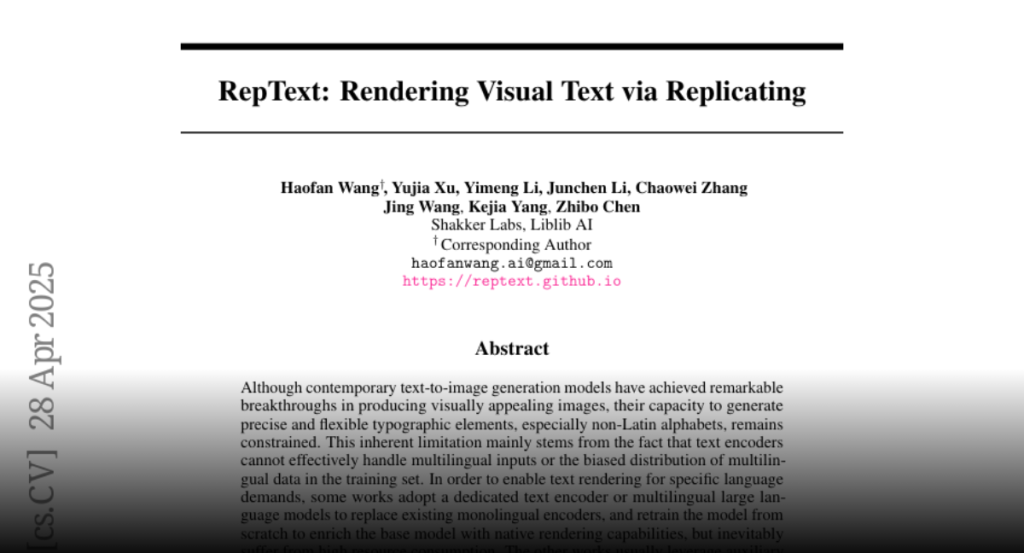Although contemporary text-to-image generation models have achieved
remarkable breakthroughs in producing visually appealing images, their capacity
to generate precise and flexible typographic elements, especially non-Latin
alphabets, remains constrained. To address these limitations, we start from an
naive assumption that text understanding is only a sufficient condition for
text rendering, but not a necessary condition. Based on this, we present
RepText, which aims to empower pre-trained monolingual text-to-image generation
models with the ability to accurately render, or more precisely, replicate,
multilingual visual text in user-specified fonts, without the need to really
understand them. Specifically, we adopt the setting from ControlNet and
additionally integrate language agnostic glyph and position of rendered text to
enable generating harmonized visual text, allowing users to customize text
content, font and position on their needs. To improve accuracy, a text
perceptual loss is employed along with the diffusion loss. Furthermore, to
stabilize rendering process, at the inference phase, we directly initialize
with noisy glyph latent instead of random initialization, and adopt region
masks to restrict the feature injection to only the text region to avoid
distortion of the background. We conducted extensive experiments to verify the
effectiveness of our RepText relative to existing works, our approach
outperforms existing open-source methods and achieves comparable results to
native multi-language closed-source models. To be more fair, we also
exhaustively discuss its limitations in the end.

